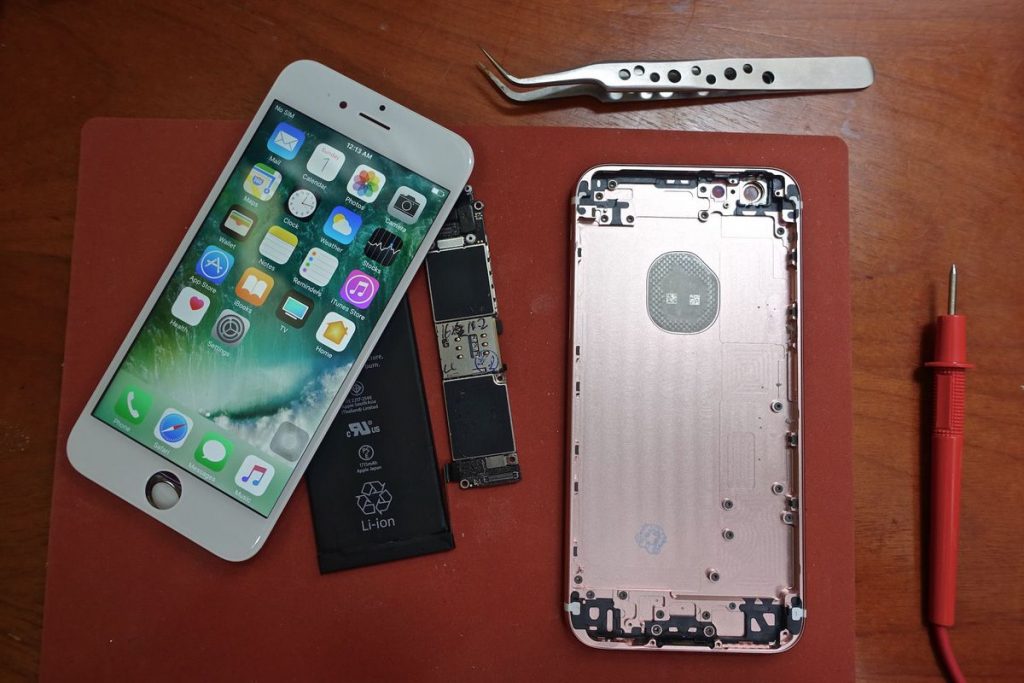Developer Scotty Allen used to be an engineer in Silicon Valley, but now he’s spending his time traveling the world making things. Allen is currently spending his time in Shenzhen, China, where he made his own like-new iPhone by buying the parts in the markets of Huaqiangbei, where all kinds of cellphone parts are available over-the-counter. Allen wrote about and extensively filmed the process, and he’s a joy to watch.
He was inspired to make an entire iPhone when he was at a barbecue joint in China with people who are interested in electronics like he is, when someone said, “I wonder if you could build your own phone.” When he set out on his quest, he wasn’t sure if merchants would even sell him parts. Eventually, albeit with a few hiccups, he was able to build a completely functional iPhone.
Allen chose to make an iPhone 6S rather than the more-recent iPhone 7 for two reasons — first, he already owned a 6S so it would make for an easier comparison. More important, however, iPhone 7 parts are harder to come by in the markets. Allen suspects this is simply because the iPhone 7 just came out in September of 2016, and since parts tend to come from recycled or broken phones, the market for them hasn’t expanded that much yet.
To make the iPhone, Allen used four basic parts: screen, shell, battery, and logic board. Allen said that the phone itself had parts worth about $300. For comparison, an iPhone 6S from Apple starts at $549.
He bought a rose-colored back that had an Apple logo, “but zero laser markings inside or outside, so I’m pretty sure it’s not from a used phone,” and found several custom unofficial laser-marked Apple backs. Allen’s adventures took him to a dozens of stores and even a cellphone repair school. Allen said he thinks anyone who watches his video and had enough patience can do it as well.
“I never really thought much about what happens when I get rid of a phone,” Allen said in the video. “I think a lot of them end up here, taken apart for parts or turned back into nice working phones.” You can learn more at Allen’s blog, Strange Parts.
A bit more about some of the parts:
Logic board – This is like the motherboard in a computer. It’s the circuit board that has the processor, flash memory, wifi/cell chips, etc on it. Everything plugs into this. The one I bought is refurbished/repaired, almost undoubtedly from a real, legitimately purchased phone made by Apple that was recycled at some point.
It came with the touch id sensor, because the processor and touch id sensor are cryptographically paired. This means that touch id no longer works if you swap out the touch id sensor. This is for security reasons, to make it harder for someone to malicious bypass touch id to unlock your phone without your permission. But it’s a really crappy restriction when it comes to repairing/refurbishing phones.
I really wanted to solder my own logic board, but this turned out to be a much larger endeavor than I thought. Stay tuned for more on this!
Screen – I really wanted to assemble my own. But there were two issues – you need a bunch of bulky equipment and I had an incredibly hard time trying to buy a bare lcd/digitizer. You can get them apparently, but they don’t seem to be readily available over the counter in the markets. So instead, I bought a broken screen from a phone repair booth, and had them completely disassemble and then reassemble it with new parts, other than the lcd/digitizer.
Battery – These are everywhere, and _really_ cheap. Like $5 USD cheap. No clue if it’s real, but I was told it is, and it looks like it is.
Back/Shell – I originally wanted to make a gray phone with a black front, to match my everyday carry phone I bought in an Apple store. That way I would have something to compare against. But I ended up having a hard time finding a logic board with a black touch id button. However, there were lots of logic boards with white touch id buttons with rose colored rings, meant for a rose colored phone. So I ended up buying a second, rose colored back, hence the rose colored phone. The back I bought had an Apple logo, but zero laser markings inside or outside, so I’m pretty sure it’s not from a used phone.
